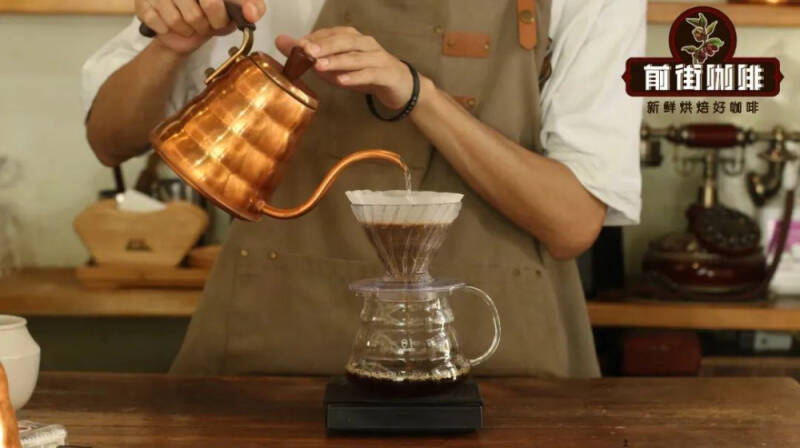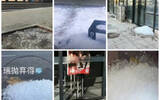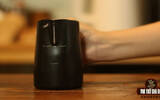Hand brewed coffee is not enough to extract, can you pour it back and re-extract it? The four parameters of a good hand rush!
Hand-brewed coffee has been integrated into the daily life of most people, whether in a leisurely home or in an office where they are at work. As long as they have free time, the people on top of the coffee will have to fill a pot. But often, high-frequency cooking can not avoid occasional rollover, too thick or too light are common "old friends" of rollover events. It's hard to drink, but it's a pity to abandon it. When we don't want to waste it and don't want to drink it, we have to think of other ways to improve it. Excessive extraction or high concentration is easy to solve, as long as the coffee is diluted by By pass (that is, adding water), the coffee can be easily tasted. But if the concentration is too low / not enough extraction of coffee, then it is a bit difficult. We can't pour it into the pot and "heat up the juice", can we?

Then I saw a comment on the front street where I was surfing: can I rewind it, soak it again and extract it again? If you think about it, it seems that you can really try it. So today, Qianjie will come to the whole job to verify whether it is really feasible to extract again.
Why can I try it? What is the principle of doing this? Before you do this, let's talk about why I think it's worth a try. To get a good cup of coffee, we need to extract the sweet, sour and bitter flavor substances hidden in the coffee with hot water (bitter substances, but not much). This step is inseparable from the appropriate four extraction parameters: water temperature, grinding, ratio and time.

These four parameters are more important to novice friends than technique and water quality. Each item is responsible for the corresponding extraction efficiency and complements each other. When one of them has a deviation and can not meet the demand of extraction, it will lead to changes in the taste of coffee and insufficient extraction. Insufficient extraction means that the flavor substances in the coffee are not fully extracted, so the concentration is low and the taste is light. In other words, many of the flavor substances in the coffee powder bed have not been extracted. Therefore, if we pour back this "what's wrong" coffee liquid and bring out the flavor substances that are still hidden in the coffee, won't this cup of coffee taste good?
But before the experiment, what we need to know is that after brewing, the original hot water at 90 °C has been turned into coffee liquid at about 70 °C, and its extraction efficiency is not so high, so friends do not have to worry too much about the occurrence of extraction. the probability is extremely small.
The necessary props for the extraction experiment are naturally a pot of coffee with insufficient extraction. Such props simply should not be easily satisfied. Qianjie, the bean used in this experiment is Asaria of Kenya. We only need to reduce its extraction efficiency to get a pot of underextracted coffee. Through roughing and grinding, we get a pot of 70 °C coffee with a concentration of 1.16%. The extraction is relatively insufficient and basically does not show any positive flavor, which can be said to be a cup of coffee-flavored water.
So we pour 1 100ml of the total liquid volume into the powder bed, re-extract, and then fuse the rebrewed coffee with the remaining coffee liquid, and finally pass the tasting to determine whether it is qualified or not, and then extract!
It took 30 seconds for the coffee to be re-extracted, and when it was added to the remaining coffee liquid, we re-measured it and found that the concentration increased from 1.16% to 1.22%. The taste is much fuller than before, and the taste of tea and berries begins to emerge! It has a good entrance at this time, but Qianjie is greedy, so it goes back again (it is still 1 hand 2).
Then the concentration rose to 1.25%, the sweetness of caramel, the taste of Wumei and small tomatoes is already quite obvious! This is more in line with the taste buds in front of the street, and that's it. So we can know that this method is feasible. However, after a long period of inversion, the flavor of coffee continues to be lost during this period, and its flavor performance will be weaker. Therefore, when we are able to brew the coffee, we try to make the coffee as good as possible, until after a car rollover occurs, we have to adjust the taste later. After all, it will increase the things to be done, and the taste is not so good, so it is better to do it well in the first place and reduce trivialities! Right?
(later stage of the camera: yes! )
-END-
Front Street Cafe
No. 10 Baoqian street, Yandun road, Dongshankou, Yuexiu district, Guangzhou, Guangdong province
Important Notice :
前街咖啡 FrontStreet Coffee has moved to new addredd:
FrontStreet Coffee Address: 315,Donghua East Road,GuangZhou
Tel:020 38364473
- Prev

The street tree in front of Ruixing is "iced"to cause controversy
▲ Click attention| Recently, a netizen released a small video of a tree facing a Ruixing store piled up a hill of ice, a lot of ice covered the root of the land, and a little ice spilled from the tree pool, let people can't help but see for the roadside tree feel a burst of penetration
- Next

Why does the milk bubble of coffee pull flowers always have endless bubbles? How to send out dense and delicate milk foam?
Often pull flowers you, whether there is such trouble: send the completed milk bubble often with more small bubbles, in any case "Duang, Duang, Duang"shock cylinder, inverted cylinder, surface bubble elimination immediately after other small bubbles, simply shock! If you've suffered this too.
Related
- Being chased out of the rain in front of Starbucks?! Store: Sheltering from rain under umbrellas poses a safety hazard
- The white moonlight has changed?! Lucky launches "Big Winter Pear American"
- Hand-brewed coffee three-stage method, high-sweet and universal brewing method to share! What does the high sweet water level of hand-brewed coffee mean?
- What is the difference between raw, refined and full espresso coffee? How to extract espresso and taste good?
- A complete list of coffee bean names and their meanings! What is Yejia Shefi coffee? Where is Mantelin coffee?
- What grade does Arida Manor Kaduai coffee beans belong to? What treatment is Arida ASD slow anaerobic sun exposure?
- The milk tea cup becomes smaller?! Overlord Tea Girl launches a new "Return to Yunnan" series
- Accused of selling counterfeit and high-priced coffee beans! Well-known boutique coffee brand "Oukelao" bowed and apologized!
- How to make espresso dumplings? Can I eat coffee and glutinous rice balls together?
- Save the unformed and stagnant powder cakes in one second! What is the problem with stagnant water in the powder bowl of the espresso machine?

